Just in case you enjoy the feeling you get from shooting film, but you can’t renounce the comforts of a digital camera! It was in fact the first digital rangefinder (and interchangeable-lens mirrorless) camera ever made, and is still going strong. I’ll go straight to the main reasons why I like it so much.
Status gauge
The status gauge on the Epson R-D1 is probably the first thing that caught my attention. Minimal. Looks like a watch. A beautiful micro world. One needle to set the white balance, one to set the image quality, the long one tells you how may shots are left, the short one tells you (just like in a car) how much “fuel” there is in the battery. Select the quality choosing from Raw, High and Normal too and you’ll see the long needle rotating accordingly. And the happiest moment is when they dance together when the camera turns on.
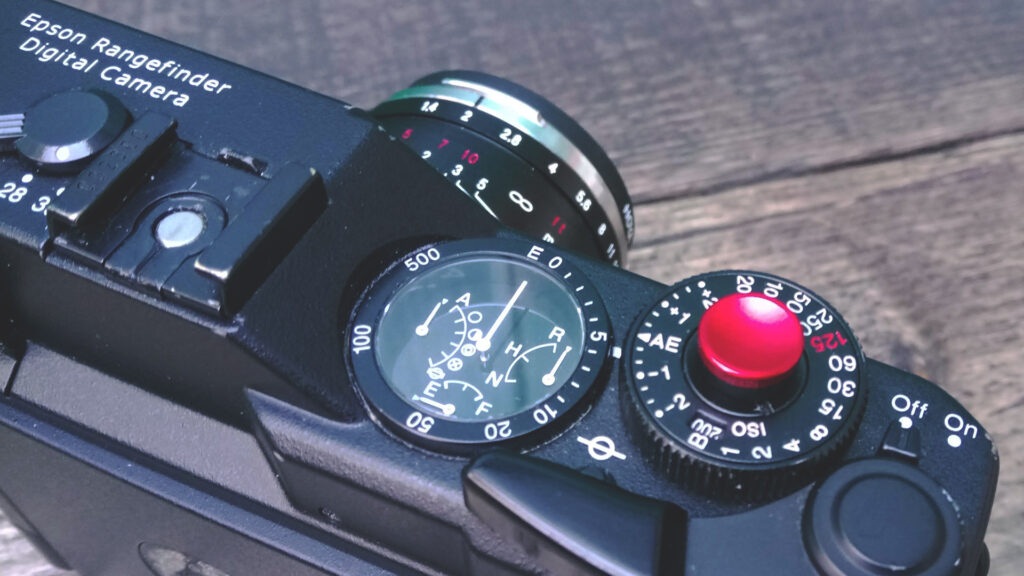
Shutter lever
The Epson R-D1 has a lever that actually cocks the shutter. It will not take a picture without you doing this first. I know it’s an extra step: there are older cameras that can get the job done in simpler, faster ways, but I’m glad it’s there! It completes the illusion of shooting with a film camera, feels quite nostalgic… It’s a shame that the lever on the Leica M10-D doesn’t do the same. Extra bonus: cocking the shutter manually will save a bit of battery life.
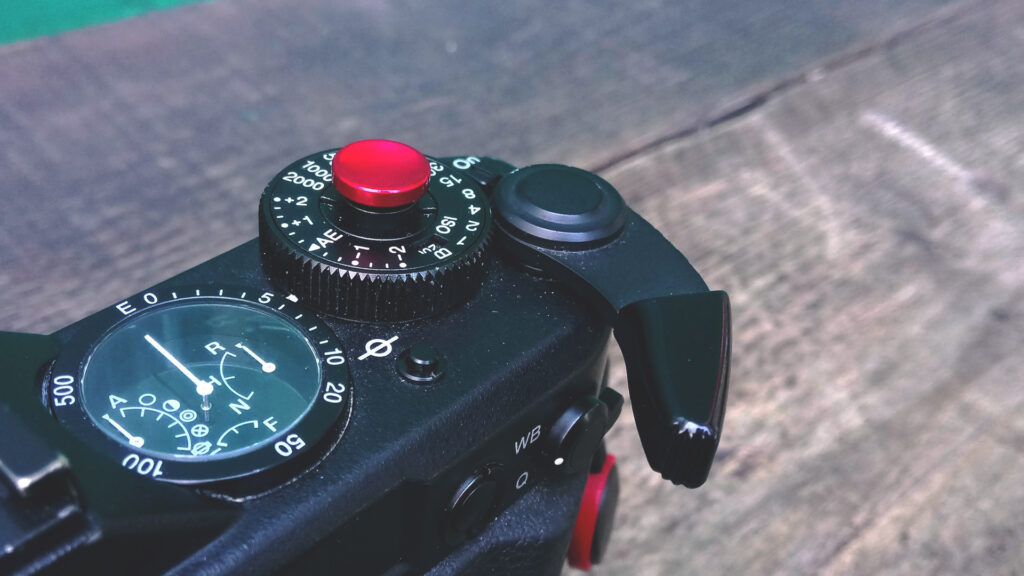
Flippy screen
Either front, back or “awkward 180° facing left” screen positions are available on the Epson R-D1. The good thing is that you can live without it – all the essential dials, buttons, settings are on the camera body and lens. You go around, take pictures, forget about the preview of the photo just taken. Also, there is no live view – one more reason to turn that screen back.
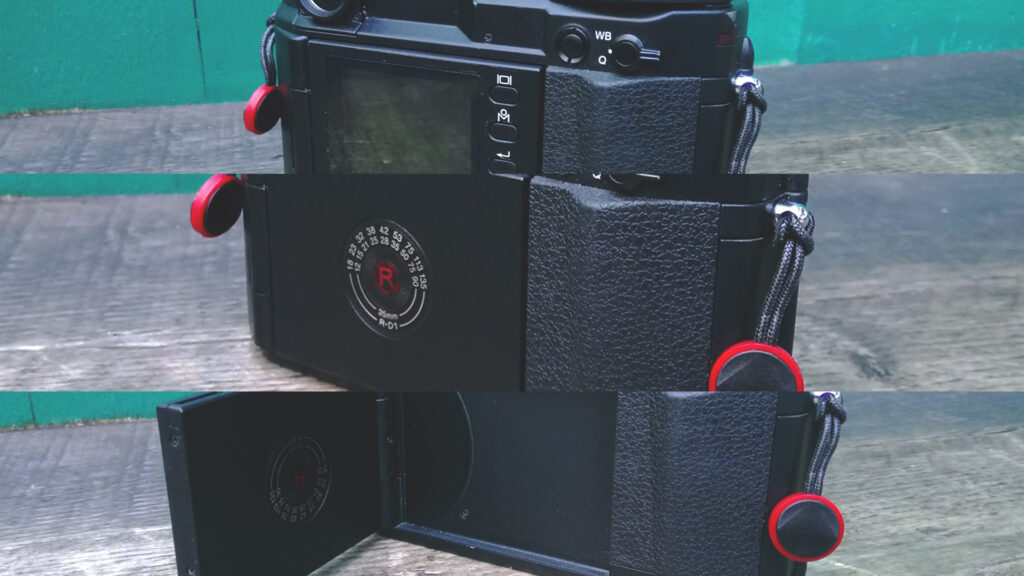
Low capacity
The Epson R-D1 allows a maximum SD card capacity of 2Gb – which is fair enough for a 2004 digital camera. It’s about 100 RAW+jpeg pictures… not as little as 36 exposures, but sill, the fact that it’s only 2Gb makes me shoot thrifty. It makes me wait for the right moment before shooting. Sure you can delete those bad pictures you don’t like, or even format and start again. It depends on what kind of experience you want to have. I personally like to take the risk and avoid to look at the pictures. I’ll just wait until I get home to see if there are any good ones. A bit like waiting for the photo studio to develop my roll, looking forward to see the results!
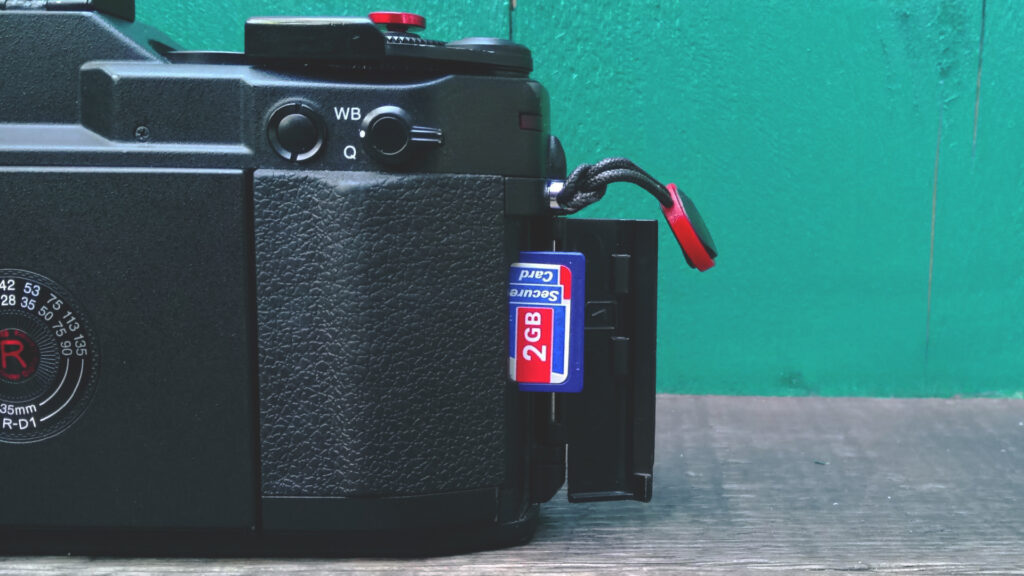
Viewfinder
The viewfinder is surprisingly bright and most importantly, there is no eye-squeezing here, no weird faces (unless you want to). The 1:1 ratio allows you to have both eyes open and see the frame lines in the real world, floating in the air in front of you!
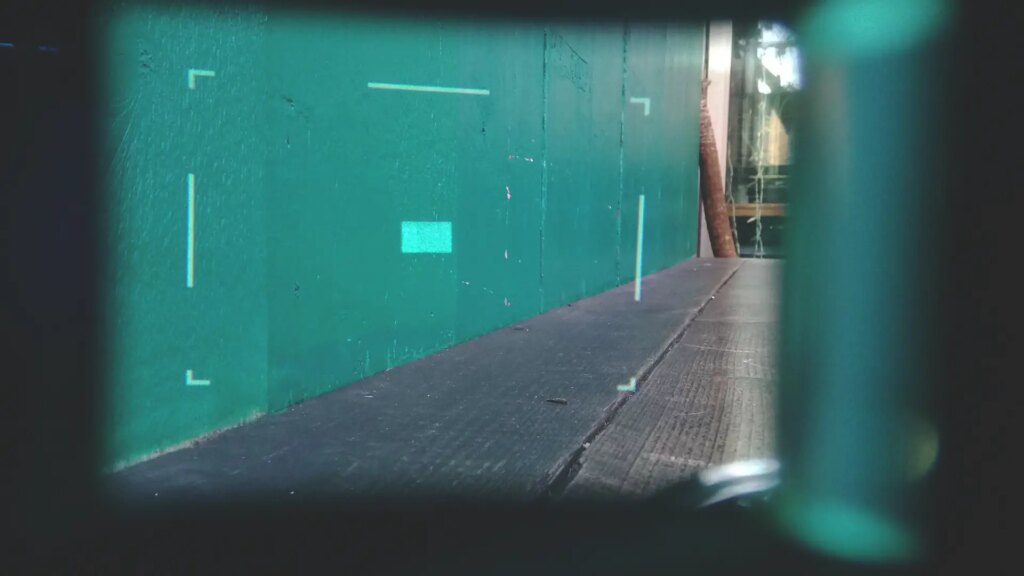
Built quality
The Epson R-D1 is one of those cameras that comes from a time when even digital cameras where made to last. Heavy, but not too heavy. As my father would say: the weight makes you feel like there must be something good inside! After a few years the rubbery skin can get a bit loose and wavy, that’s why I cleaned everything underneath and stuck a brand new skin onto it (there are still people making pre-cut pieces even for this camera!).
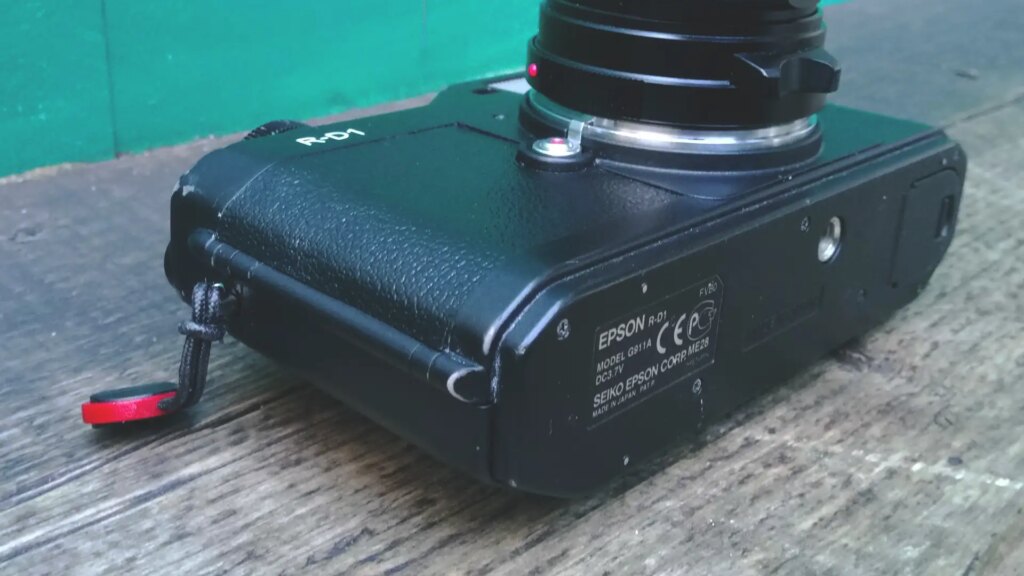
JOG dial
One of the most unnoticeable yet smartest parts of the Epson R-D1 is the Jog dial. It looks like a rewind knob, placed on the top left edge of the camera. Twist it to navigate the menu and pictures, zoom in and out, pull it up and twist again to go left or right, up or down, change the picture quality and white balance needles. Directly from a touchless-screen era.
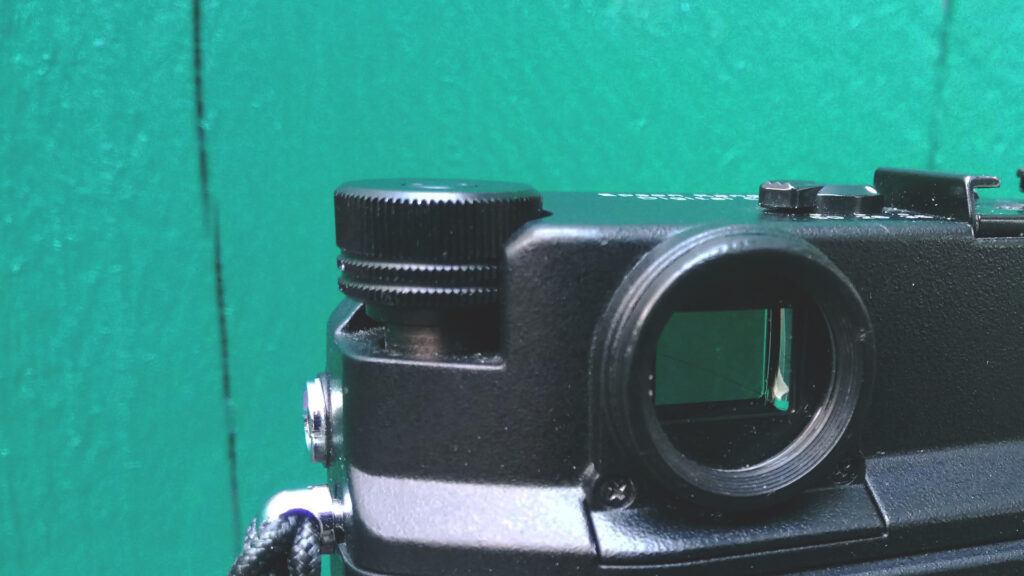
Final result from the Epson R-D1
In the past I always felt that I needed to edit my pictures coming out of my digital devices (in terms of color, saturation, contrast…) but with the Epson R-D1 I’m often happy with what I get straight from the camera! The image quality is not the highest by today’s standards, but still really good for what I need. Scale up the photo and you’ll see something… I know it is not film grain, but not the common digital noise either, there is a little something pleasing… hanging in between the two worlds.
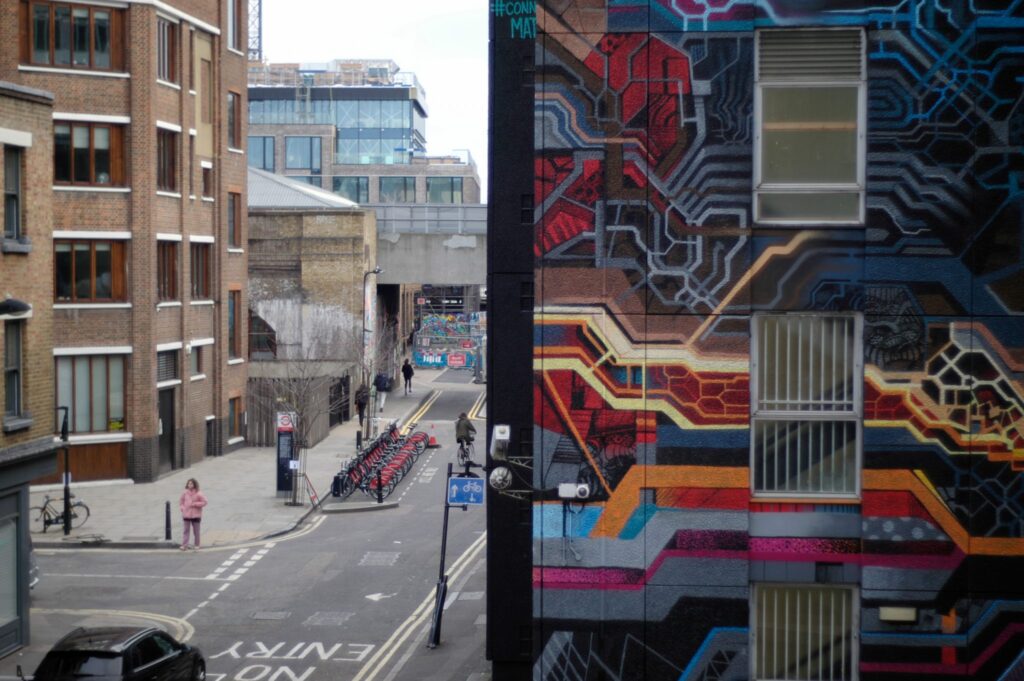

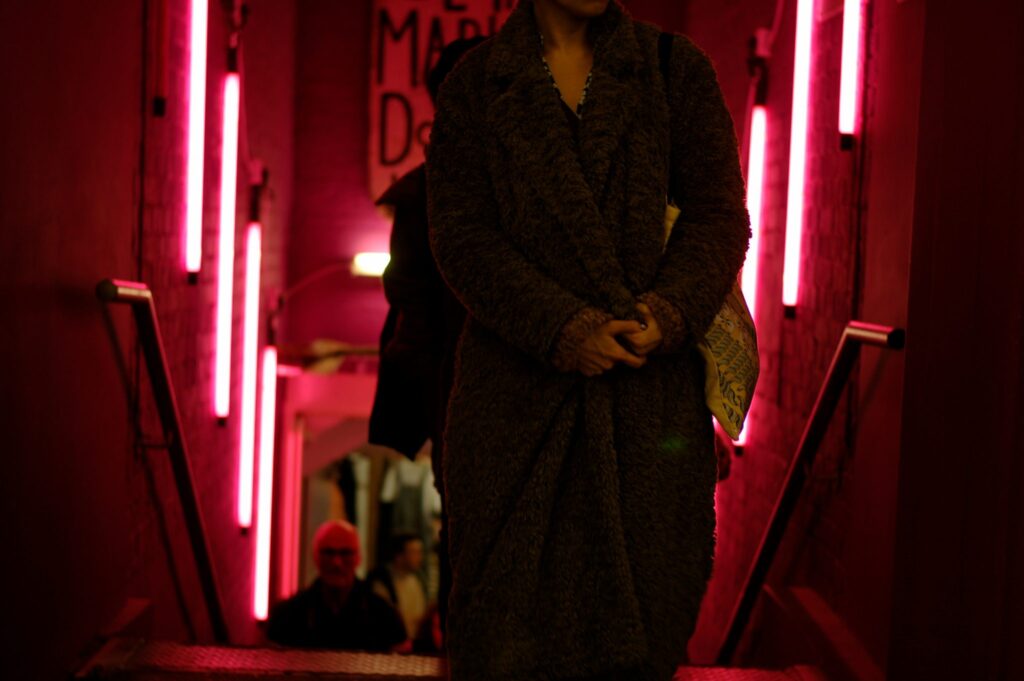
Cons. Being an old technology can have its disadvantages. The most annoying one is the computing time: that red light flashes, tells me the camera is doing something, working, saving the image on the SD card, pixel by pixel, line after line… oh gosh… a bit too slow! You also have to be very careful with the battery door: make gentle movements to open and close it or you’ll risk to brake it.
Long story short. The Epson R-D1 (and sisters) might not be a camera for everyone, for sure not for the most demanding. It has its own limitations, but I like it, body and soul: makes want to go outside and shoot, it’s challenging, keeps me motivated, pushes me to experiment and hopefully it will also help me learn and improve.
I’m a digital compositor, videomaker and film photography nostalgic.
Hope you enjoyed this review, feel free to see more of my works here:
website www.simonezuccarini.it
instagram @simonezuccarini.it
vimeo www.vimeo.com/simonezuccarini
Share this post:
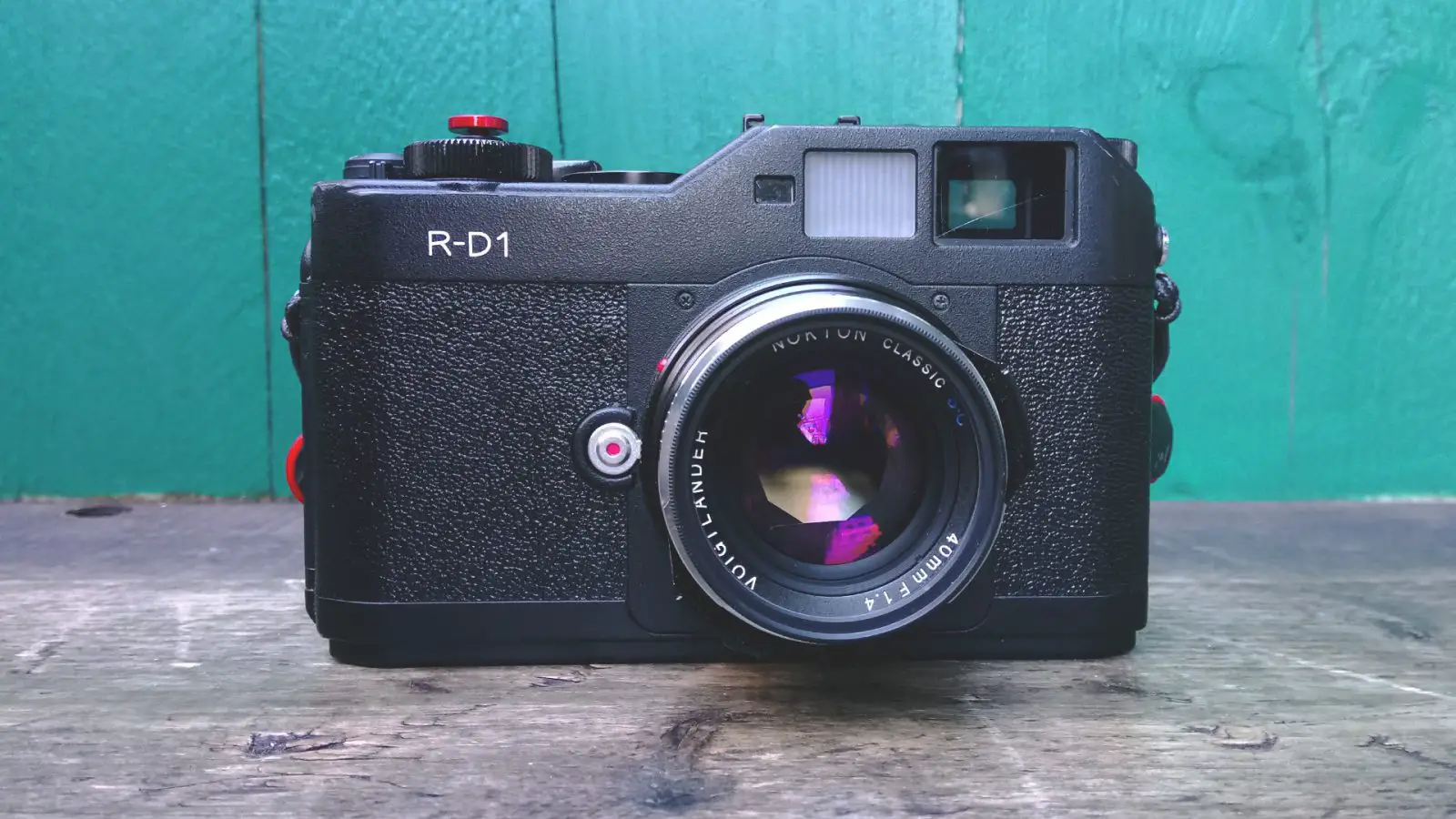








Comments
StephenJ on Epson R-D1 review – a digi-film camera – By Simone Zuccarini
Comment posted: 23/03/2019
Possibly something for Leica to copy if they want to get the MD concept right!
I have picked a few of these things up and nearly gone for the wallet, and then at the last minute, hesitated. I guess it is the old technology, it is both attractive in that it handles a bit like film, but unattractive in that we know there is technically more capable out there for less cash.
Their black and white performance is highly rated.
However, these are often quite expensive considering their age.
Comment posted: 23/03/2019
Comment posted: 23/03/2019
Mike Hinkleman on Epson R-D1 review – a digi-film camera – By Simone Zuccarini
Comment posted: 23/03/2019
The process time is a bit irritating at first. The M9 Monochrom is slow too. I think it's slower than an M2
The RD images are wonderful to view and print.
Thanks
Lori on Epson R-D1 review – a digi-film camera – By Simone Zuccarini
Comment posted: 24/03/2019
Winona on Epson R-D1 review – a digi-film camera – By Simone Zuccarini
Comment posted: 21/04/2021